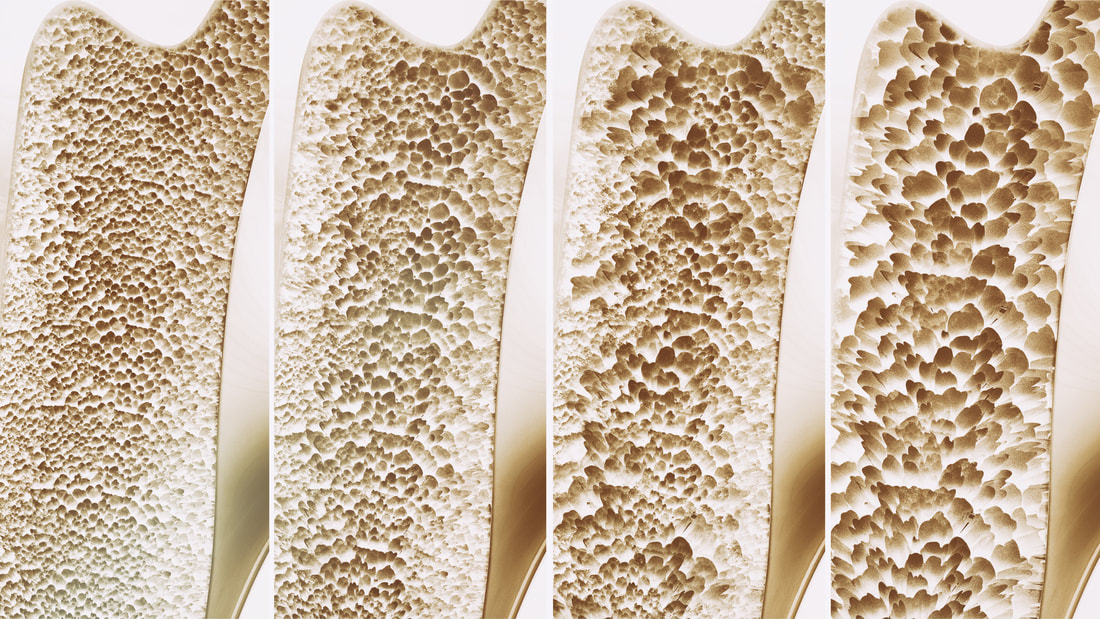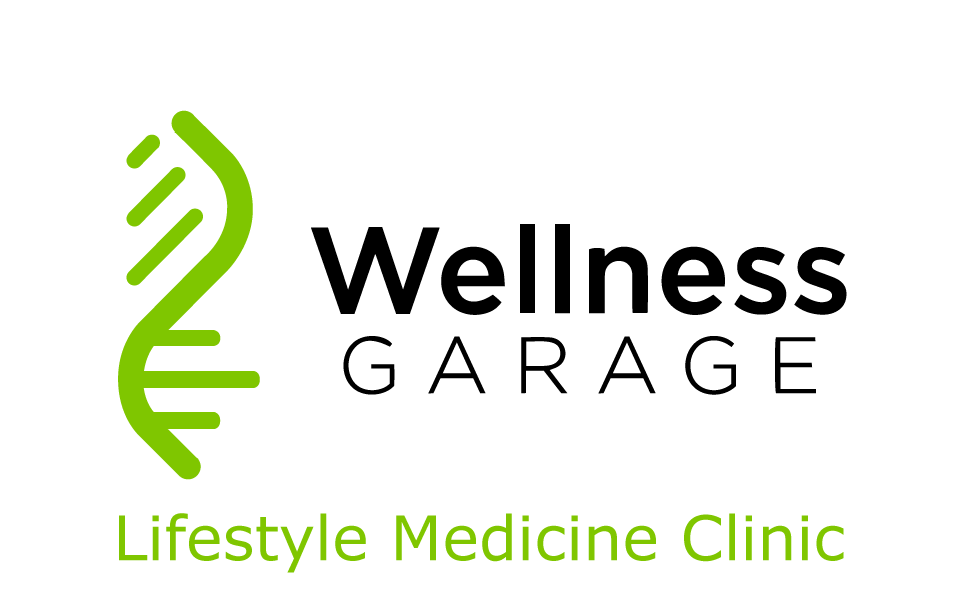|
Osteoporosis is “a skeletal disorder characterized by compromised bone strength, predisposing to an increased risk of fracture” (Osteoporosis 2000). One in three women and one in two men will suffer an osteoporotic fracture in their lifetime. 80% of all fractures in people over the age of 50 are a consequence of osteoporosis. Of the various osteoporotic fractures, hip fractures are the most devastating:
Unfortunately, all too often, a fracture is the first indication that a person is affected by osteoporosis. To understand why osteoporosis happens and to develop a strategy to prevent its consequences, we must understand how bone works. Last week we reviewed the dual, competing functions of bone: Bone acts as structure as well as reservoir for calcium and phosphorus act in competition. Bones must be strong and flexible to respond to the weight bearing and mechanical forces of our activities. When our activities increase in intensity, our bones get stronger in order to sustain the load. However if calcium or phosphorus are in short supply, our regulatory hormones will draw them out of bone to serve vital function in other cells in the body, and in the process potentially weaken bone. Bone is an incredible material providing both strength and flexibility in order to be resilient to the mechanical forces imposed by daily activities. To accomplish this bone is a composite material made of minerals bound to protein, predominantly collagen. If bone was made only from mineral crystals it would be brittle and fracture easily; if made solely from protein it would be too flexible and would not provide adequate structure and flexibility. Bone is also a dynamic material always changing and growing, responding to mechanical loads, resorbing and laying down new bone through the balanced effects of osteoclasts and osteoblasts. During our childhood, as our bones are growing both cell types are constantly working, osteoclasts reshaping and osteoblasts rebuilding bone with osteoblast activity predominanting so that bone length, thickness and overall mass increase as our bodies grow in stature. Once growth is finished and we are adults, osteoblasts spend less time creating new bone and more time regulating bone repair - osteoblasts signal osteoclasts to hollow out bone in a specific location and then fill in that area with new & healthy bone. To build and maintain our bones three general principles emerge:
Osteoporosis has been described as a pediatric disease with geriatric consequences, because our bone mass peaks when we are young (16-20 in women, and 20-25 in men). As young adults, our goal is to maintain bone density and strength through the three principles. But even with excellent bone habits, we all begin to lose bone in our mid 30's. For woman the situation is more challenging as the precipitous drop in estrogen that occurs in menopause causes rapid bone loss, and is the reason why woman are more affected by osteoporosis than men.
So, the question for middle age to older people is how do the three principles work to avoid the consequences of osteoporosis? The key here is to think about more than bone density, to develop a strategy to decrease the consequences of osteoporosis: debilitating and life shortening fractures. Looked at from this angle - Principle 1 - use your bones to increase their strength is most important. Moderate to vigorous exercise is associated with a 45% and 38% reduction in hip fractures in men and women respectively. Exercise helps slow the loss of bone that comes with ageing in both men and women, but this is not how it decreases hip fracture risk. Exercise works by reducing the risk of falling in the first place. Developing an exercise strategy that focuses on maintaining strength, functional movement and balance is the best thing you can do to avoid the consequences of osteoporosis - regardless of bone density. What about Principle #2 - supplying your body with the key ingredients to develop bone? This is absolutely key in the bone developing years as teenagers and young adults, and likely important through middle age, but it is not sufficient to decrease fracture risk. A systematic review published in 2015 by Boland et. al concluded that "dietary calcium intake is not associated with risk of fracture, and there is no clinical trial evidence that increasing calcium intake from dietary sources prevents fractures. Evidence that calcium supplements prevent fractures is weak and inconsistent." Complicating matters further, there is some evidence that calcium supplements may be associated with cardiovascular risk though the evidence is inconsistent and inconclusive. Many clinicians have moved away from recommending calcium supplements, instead recommending that adequate calcium intake be achieved through nutrition. Given the high calcium content of green leafy veggies - this is definitely the position we take. As for Vitamin D, there are so many benefits of "D" beyond bone that the lack of clinical trial evidence to support a reduction in fracture reduction, does not change our view that maintaining optimal Vitamin D levels must be part of any strategy for long term health and vibrancy. Principle #3 - holds firm - while bone loss is inevitable with ageing - it is essential to avoid substances that accelerate bone loss. Bottom Line: When it comes to osteoporosis, the strategy must be to decrease the consequences:
Decreasing bone density is an inevitable part of ageing - our bone density peaks in our early years, is maintained up to middle age and declines thereafter. If we live long enough, our bones will become thinner. Whether they reach the diagnostic levels of osteoporosis is less important than our ability to avoid falling. The best osteoporosis strategy is to do everything to avoid the likelihood of falling, while providing the best lifestyle support to decrease the rate of bone loss. While this advice applies equally to men and women, we have left out something for women - the role of estrogen in bone loss and osteoporosis, and the risks and benefits of estrogen replacement as an osteoporosis strategy...more on this next week. You may be interested: Osteoporosis Considering the Role of Estrogen Therapy The Science of Bone Health - 3 Principles to Develop and Maintain Bone |
AuthorDr. Brendan Byrne Categories
All
|


 RSS Feed
RSS Feed
